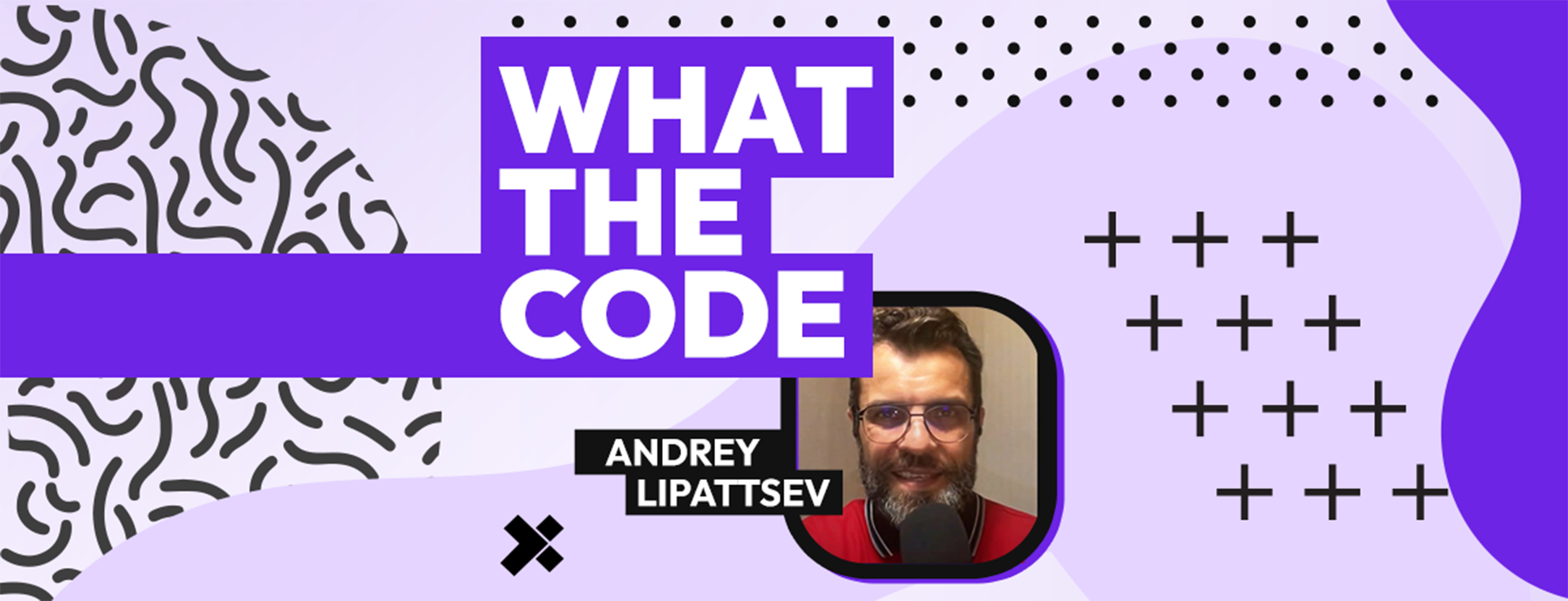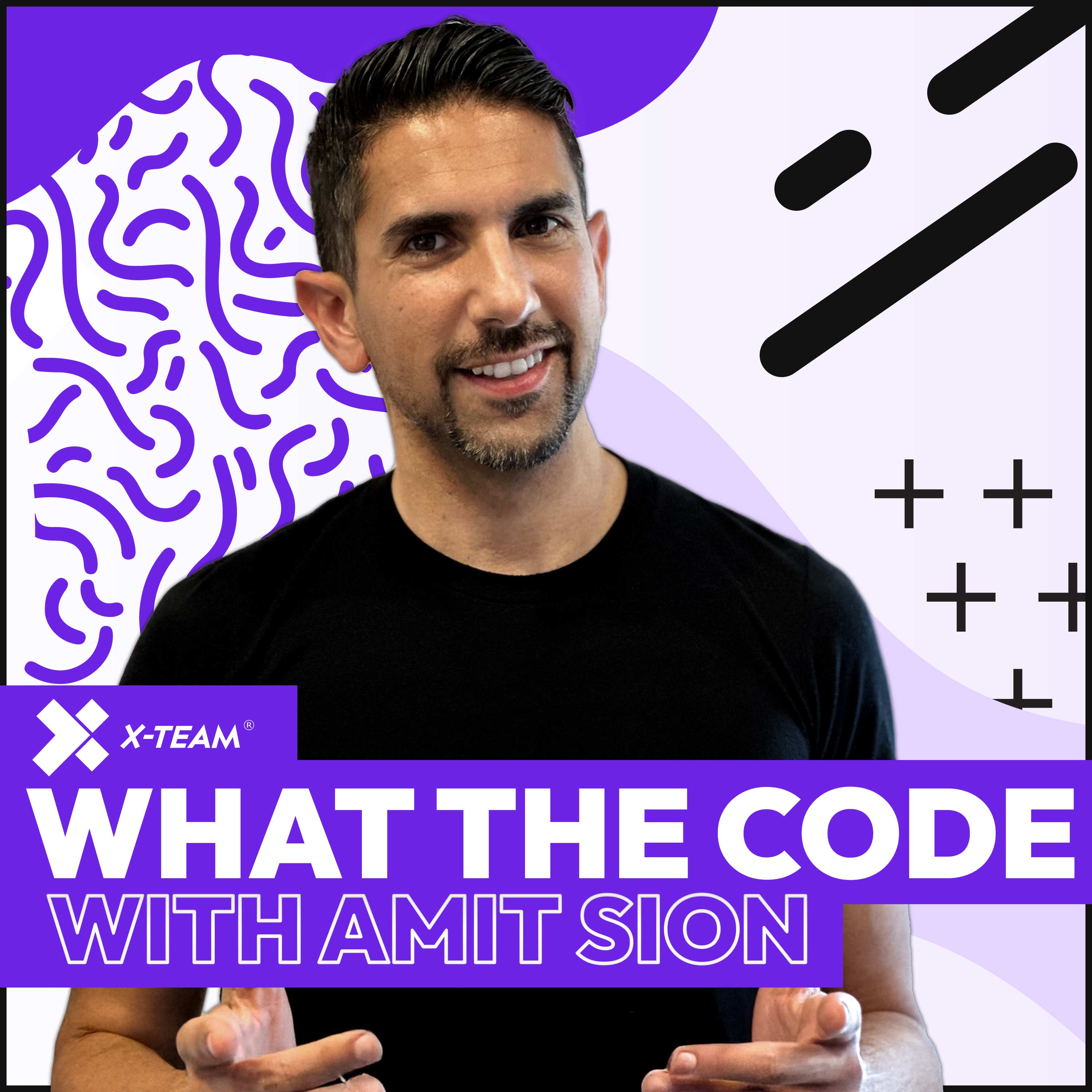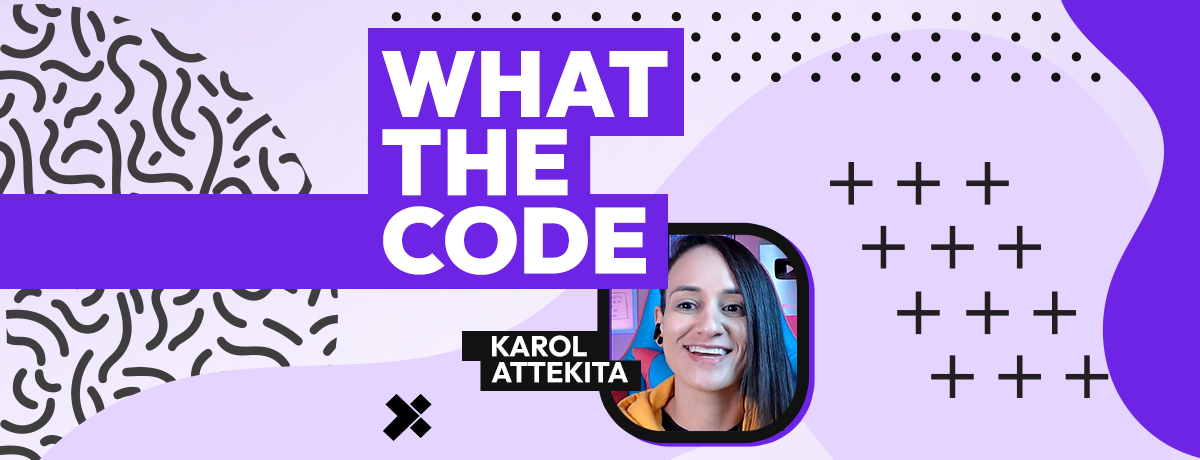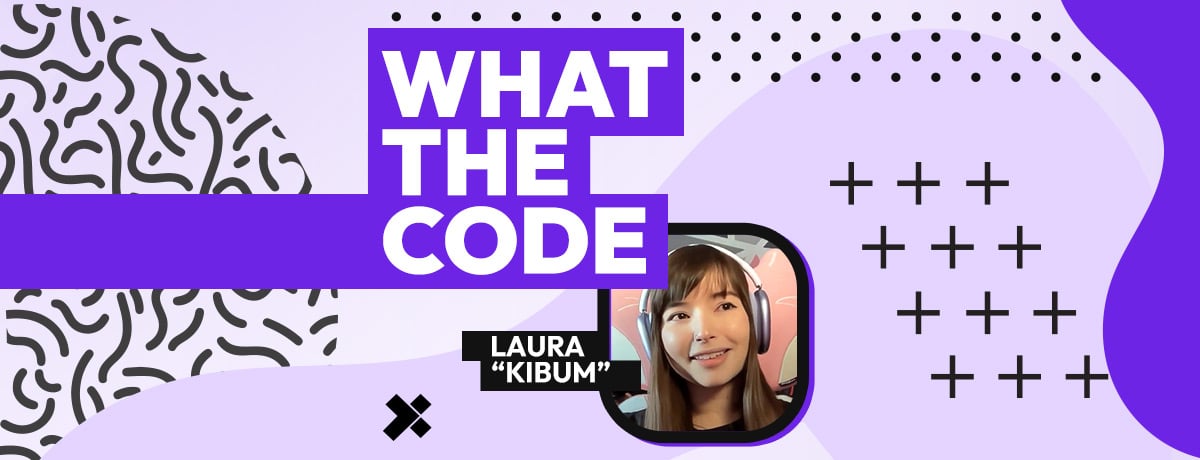
What makes a great advertisement today? According to Andrey Lipattsev, a product manager at Google working on YouTube Ads, it’s all about understanding the moment, the message, and the meaning behind the content. You want to know not just who’s watching, but why.
In this episode of What the Code, Andrey reflects on two decades of YouTube and explains how large language models and contextual intelligence are shaping the next chapter of digital advertising. With new tools for understanding video tone, structure, and emotion, YouTube is exploring how ads can better serve viewers, creators, and advertisers all at once.

Context Is the Next Frontier
Andrey believes advertising’s focus should shift from audience identity to content intent. This is a different approach than the ad-targeting personalization we know today.
“What we're talking about here specifically is not personalizing it to the viewer,” he says. “This is deep contextual understanding. … We're able to match the intention and the main spirit of the ad being displayed with the actual sentiment, not just of the video overall, but of specific elements of that video.”
By analyzing what a video is about, how it feels, and what it communicates, YouTube Ads can now support more relevant placements that benefit all parties, including users. “We're aiming to match the moment to the user to the content in the best way possible,” he says.
This approach improves ad alignment without relying solely on user behavior, which leads to more meaningful experiences and fewer interruptions.
Creators Set the Standard
As digital content becomes more sophisticated, YouTube’s creator community continues to raise the bar, Andrey says.
“What I am realizing more and more now as I keep working on this product is that the production values and the quality of content produced by some of the top YouTube creators are in no way inferior,” Andrey says. “In many ways [it is] actually superior and more attuned to the needs of the audience than some of the legacy, traditional, studio-produced content.”
Better ad matching supports better monetization for creators. When advertisers connect with the right content at the right time, creators are rewarded for their work, and viewers benefit from higher-quality experiences.
The Possibilities Are Limitless
With YouTube recently marking the 20th anniversary of its first video upload, Andrey sees this moment as a chance to imagine what comes next.
“We're implementing this specific opportunity inside YouTube Ads as an indicator of the possibilities that are being opened,” he explains. “The ultimate limit is our imagination. I truly invite everybody to just think about what's impossible right now and how to turn it into something mundane that, 20 years from now, people will look at and just smile at the time when something like this wasn't possible.”
From home videos to high-impact global content, YouTube has changed how the world watches and shares. With deeper content understanding and more intentional ad experiences, the next evolution is already underway—and Andrey Lipattsev is helping shape it.
Transcript
Amit Sion:
It's a really exciting day today because Google is now celebrating the 20-year anniversary of the first video ever published on YouTube. I wanted to have a chat with the product manager of YouTube Ads, Andrey. Andrey, nice to speak with you.
Andrey Lipattsev:
Good day, Amit. It's good to be speaking again.
Amit Sion:
Andrey and I have known each other for many years. We meet probably about once a month for the last six years, collaborating on lots of exciting projects, but you just recently moved into the YouTube Ads team. It must be very exciting.
Andrey Lipattsev:
It is, it is. Absolutely, it's a delight to be joining this team at such an exciting time. Throughout my career in Google, I've always pursued projects that resonated strongly with the company's core mission, and I feel like I have a unique opportunity now to keep doing that. I think in everything that you and I have tried to work on together, and did work on together quite successfully over the past few years, there was always an element of this, which always gave us energy and the drive to work through even the most difficult of challenges.
I feel like over the past couple of years, we've really been living through an unprecedented wave of innovation, driven clearly by generative AI and all that’s possible. Now, you could not imagine a more exciting time to be working on a video platform, now that we have the capability to explore and dive deeper into this wealth of content that is available and even more useful and more accessible to more people.
Amit Sion:
I really think that there's markers in technology history. I remember when, as far as search engines, I had Yahoo and AltaVista and all the widgets and things that came out. Then suddenly, Google came out and it was clean, and it was fast, it was so much faster, and you could hit—those who remember the "Feeling Lucky?" and it comes up with the best result—and it just changed things. It changed things in search engines.
And then suddenly, a few years later, YouTube is this amazing tool for all the access to all the greatest videos. You think of some little clip of some TV show that you saw many years ago, and you're able to find it in seconds. To bring that, and have the ability to search on that into YouTube, was so exciting when those two things came together. Now like you say, this is the next evolution. Now that we're in the AI evolution, injecting that in there must be just so exciting to be working on.
Andrey Lipattsev:
It is super-interesting. Riffing off a little bit of what you said there, it just made me think that it's not only content that has been produced in the past 20 years that is available on the platform. We've made content available that was produced decades ago. Probably, by now, probably valid to say more than a century ago, that content is available on YouTube and therefore accessible for generations to come. But of course, making content available isn't the same thing as making it accessible.
To your point about the evolution, which is a term I'm going to definitely steal, it is as always somewhat of a hyped-up term, somewhat of a hype type drive right now, where there's a lot of vaporware in the air. And many companies, I'm not going to point fingers, are probably guilty of pumping up that balloon further than it can possibly be pumped up. But I do know that we've seen over the past couple of years very specific and tremendously powerful applications of AI.
I do know that one of the areas, and specifically the area that I'm going to be working on and I'm working on now, and that is the area of powering the creation of content freely available for all through digital advertising, can benefit tremendously through the introduction of large language models into video understanding. Just recently at the YouTube Brandcast on May the 14th, we've announced the future launch of a super-exciting new product for both YouTube advertisers, creators, and also YouTube viewers. Which for the first time, if I may be so bold as to say that—maybe people will point out that this is somehow technically incorrect, but I'll still go with being on the record as to say that—this is for the first time when we're able to match the intention and the main spirit of the ad being displayed with the actual sentiment, not just of the video overall, but of specific elements of that video.
I find that so transformative because thanks to that, we should potentially be able to match the quality and quantity of advertising displayed to the expectations and the needs of our users. And often by users, I mean everybody: viewers, advertisers, and creators themselves. And given that this is just the beginning, it's a road that can take us towards further empowering more creators, making digital advertising more accessible to more companies in more powerful ways, and ultimately making the viewing experience richer and more enjoyable for our viewers, as well. Really interesting product that I get to work on, really exciting months to come where we get to polish it before we prepare the final release, but do catch up on the latest announcements from Brandcast to see exactly what we think it's going to look like.
Amit Sion:
Well, I think that there's an expectation now of personalization, and I definitely see it in the next generation. My 18-year-old children, when they're going on TikTok and they're scrolling and all that, they would pause specifically on certain things because they're trying to train the algorithm to get to know them personally because they want it to be personalized. Now what we're talking about here is that you're watching a YouTube video, and the ad is linked based on what the content of the video is, so that it would be of interest to the person who's watching it because they've selected to watch that video.
Andrey Lipattsev:
Indeed, indeed. It should be of interest to the person watching it. It should be matching the creator's intent in terms of capturing the audience and keeping the audience entertained, informed, engaged, and coming back to the channel. And it's matching the advertiser's intent in servicing their message at the most relevant moment for the audience. I want to emphasize that what we’re talking about here specifically—we're having a conversation back and forth about various things—but what we're talking about here specifically is not personalizing it to the viewer. This is actually the—
Amit Sion:
No, but the content—
Andrey Lipattsev:
This is deep contextual understanding. Exactly, exactly, but it's not to say that these approaches cannot be used jointly for more powerful results.
Amit Sion:
Yeah, absolutely. I think that for advertisers, especially, they want to know that if they're paying for a YouTube ad, that it's going to hit the audience member who's interested in the same alignment. For example, if you're watching clips from “Fast & Furious,” and then you've got some aligned vehicles that suit to that, because that's what the person is interested in and just at the right moment. I think that giving that to people, the goal is to make them enjoy the ad, as well as the video content.
Andrey Lipattsev:
Absolutely, exactly. Enjoy it, find it, there's different definitions we want to be—you could, if you wanted, get really picky about what the goal should be. But overall, I think whatever we're talking about here, whether it's enjoyment or informing or educating or enabling, we're aiming to match the moment to the user to the content in the best way possible. It's really mind-blowing how far we've come in these past 20 years since the first video was uploaded, just in the hope that this made-for-self home videos could be interesting to anybody beyond the really immediate family audience. They're now having a multi-billion worldwide audience with so much potential.
Amit Sion:
Well, a lot of people now prefer to watch content produced by at-home content creators than highly produced multi-million-dollar movies. There's places for ads in either, depending on what suits.
Andrey Lipattsev:
If I can just quickly jump in, I want to emphasize as well another thing. What I'm super-excited about, and what I am realizing more and more now as I keep working on this product, is that the production values and the quality of content produced by some of the top YouTube creators is in no way inferior, and in many ways actually superior and more attuned to the needs of the audience than some of the legacy, traditional, studio-produced content. It just blows my mind continuously exactly how well this new wave of new generation of creators are able to use the resources at their disposal to create stuff faster, less expensively, with even bigger impact than was imaginable before.
Amit Sion:
Which brings the focus to the content. Can I ask you, how does the technology work? Are you evaluating the tone of the content? The content that is within it, is it the language, the suitability to themes? What is Google actually doing?
Andrey Lipattsev:
Well, without spilling the entirety of our secret sauce over all of our users right here, all of our listeners, I should rather say, think of it as. you could literally try it yourself. Use generative AI of your choice, any of the multimodel models that enable video processing or even image processing, and ask it in baby steps. First, maybe describe what is happening in the image or the video. And then start asking it more probing questions about the tone, the emotional content, maybe some other elements that are of interest to you. I think you'll start getting an understanding and a feel for the direction which we are going with this, as well.
Amit Sion:
This is something that's available now, the ability to speak to it and ask, “What is this content about?”
Andrey Lipattsev:
Yes, very much so. I would say this has been available for a while now with the release of many of the recent generation. Again, given that we would like this video to be as evergreen as possible, in this world, I'm not even going to mention any specific model numbers. But yes, multiple genAI models from different companies have been able to understand and generate. This works both ways, text-to-video and text-to-image has been available for a while, and so has image-to-text and video-to-text.
Amit Sion:
There's an element here of supporting the advertisers in getting their ads to the right content that aligns with what they're presenting. What about the opposite, like preventing it? Is there elements where you're reviewing the content to see what's not appropriate?
Andrey Lipattsev:
That's a great question in the sense that it addresses what for me is one of the core strengths of YouTube. It's not something that I am working on, but also I feel like I don't need to, because we have a tremendously talented and capable team of trust and safety specialists and brand safety specialists and brand suitability specialists, specifically at YouTube, that actually enable us to work with content and also with content that already has gone through a lot of levels of clearance, but also are able to lend us their hand in addressing specific issues within the very minute level of detail. It's not something that I'm working on, but definitely at the YouTube level, this is something that is happening continuously.
Amit Sion:
I just think this element, and I bring it back to, I'm not saying that this is the official goal of Google or YouTube, but more my take on it, of loving the ad. That when we started doing websites, there was the banner ads, and people would just train themselves to ignore it. Then with a lot of video ads, you're waiting for that “skip” button to come up, but I remember a time when on network television, my wife and I talk about how you'd look forward to a certain ad because it had a jingle, and you liked it and it clicked with you, and it suited to something that you're interested in. I think if Google's able to do that, to make someone love it, then you've won.
Andrey Lipattsev:
Well, I certainly wouldn't argue with that. I don't know to what extent Google and YouTube are capable of making people loving ads, but we can certainly incentivize and empower advertisers and marketing agencies to think about the advantages of creating content exactly the way that you described—that is loved and that evokes feelings of deep emotional connection and connection to specific values that you want your users to associate with your product or your potential users. Hopefully, this is more power to the people, and it's going to spark a whole new wave of innovation in this space, as well.
Amit Sion:
I think this is really exciting. Again, there was just the celebration, I think you were saying, around the Google offices, you've got the celebration of the 20 years. What was it, of the first video?
Andrey Lipattsev:
Of the first video uploaded, we just had it on the 23rd of April this year. It's crazy how far we've come in 20 years.
Amit Sion:
What was that video, Andrey? Do you remember?
Andrey Lipattsev:
I believe it was called “Me At The Zoo” or “Day at the Zoo,” and it was uploaded by one of YouTube's co-founders, Jawed Karim.
Jawed Karim [via video clip]:
All right, so here we are, one of the elephants. The cool thing about these guys is that they have really, really, really long trunks, and that's cool. That's pretty much all there is to say.
Amit Sion:
All right, so I think after people watch this, firstly, if you have any interests and conversations on this, please feel free to put in the comments here. But make sure to check out “Me At The Zoo” and watch that as a celebration of 20 years of great YouTube video.
Andrey, this is exciting work that you're doing, and I think, like with all different elements that AI is infusing, there's something great, there's another leap up that's about to happen in YouTube ads thanks to this technology that you're putting into it.
Andrey Lipattsev:
Yeah, I surely hope so. Thanks a lot for having this chat. I hope people find it useful and insightful and will inform their way they're thinking about making decisions for the rest of the year. But I'd like to particularly emphasize the new frontiers that are opening up to us. The fact that we're implementing this specific opportunity inside YouTube Ads is an indicator of the possibilities that are being opened.
And while we need to remain very security- and privacy-conscious in our approaches to using genAI, the ultimate limit is our imagination. I truly invite everybody to just think about what's impossible right now and how to turn it into something mundane that, 20 years from now, people will look at and just smile at the time when something like this wasn't possible.
Amit Sion:
A great note. Thank you, Andrey. A pleasure. always. to speak with you.
Andrey Lipattsev:
Absolutely, likewise. Thanks, Amit.
TABLE OF CONTENTS



